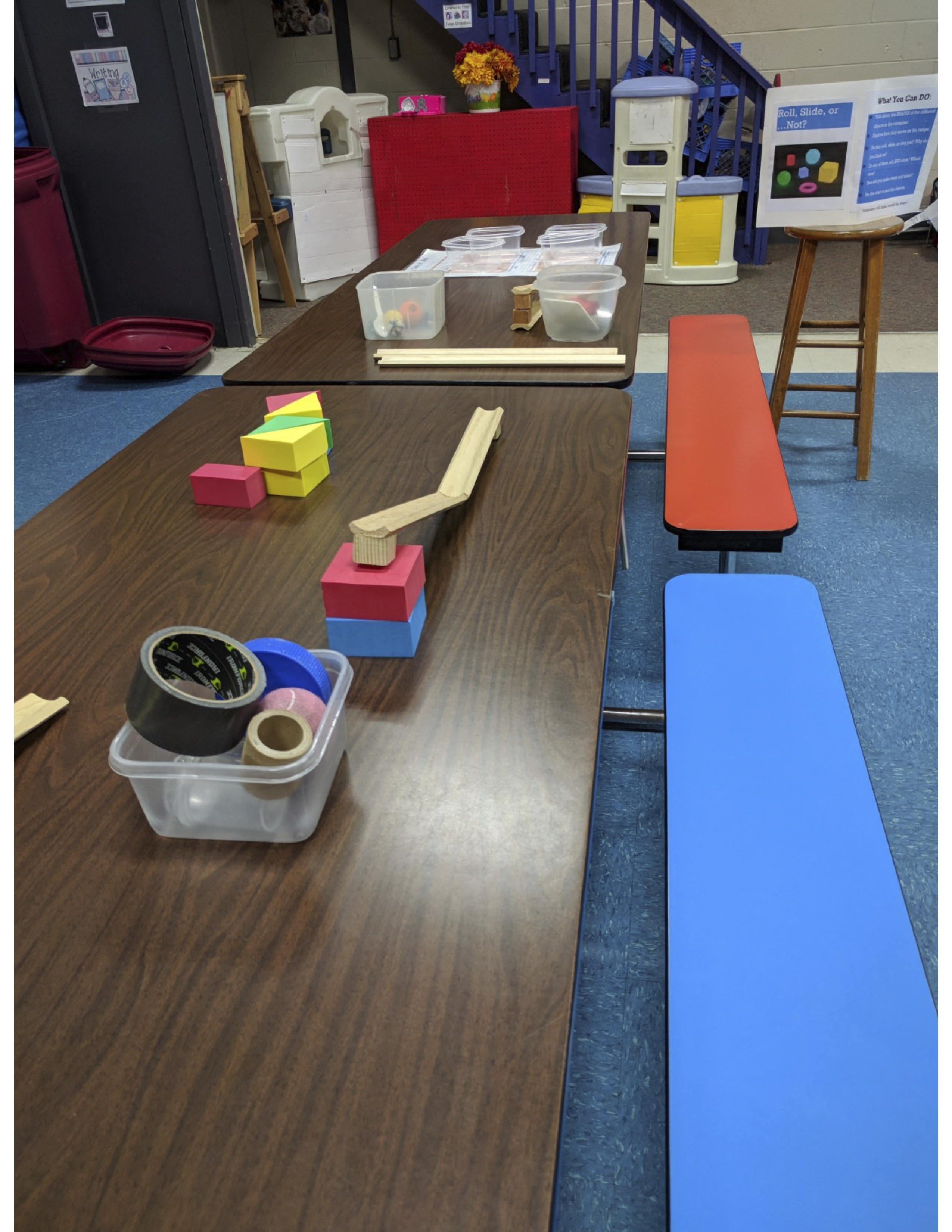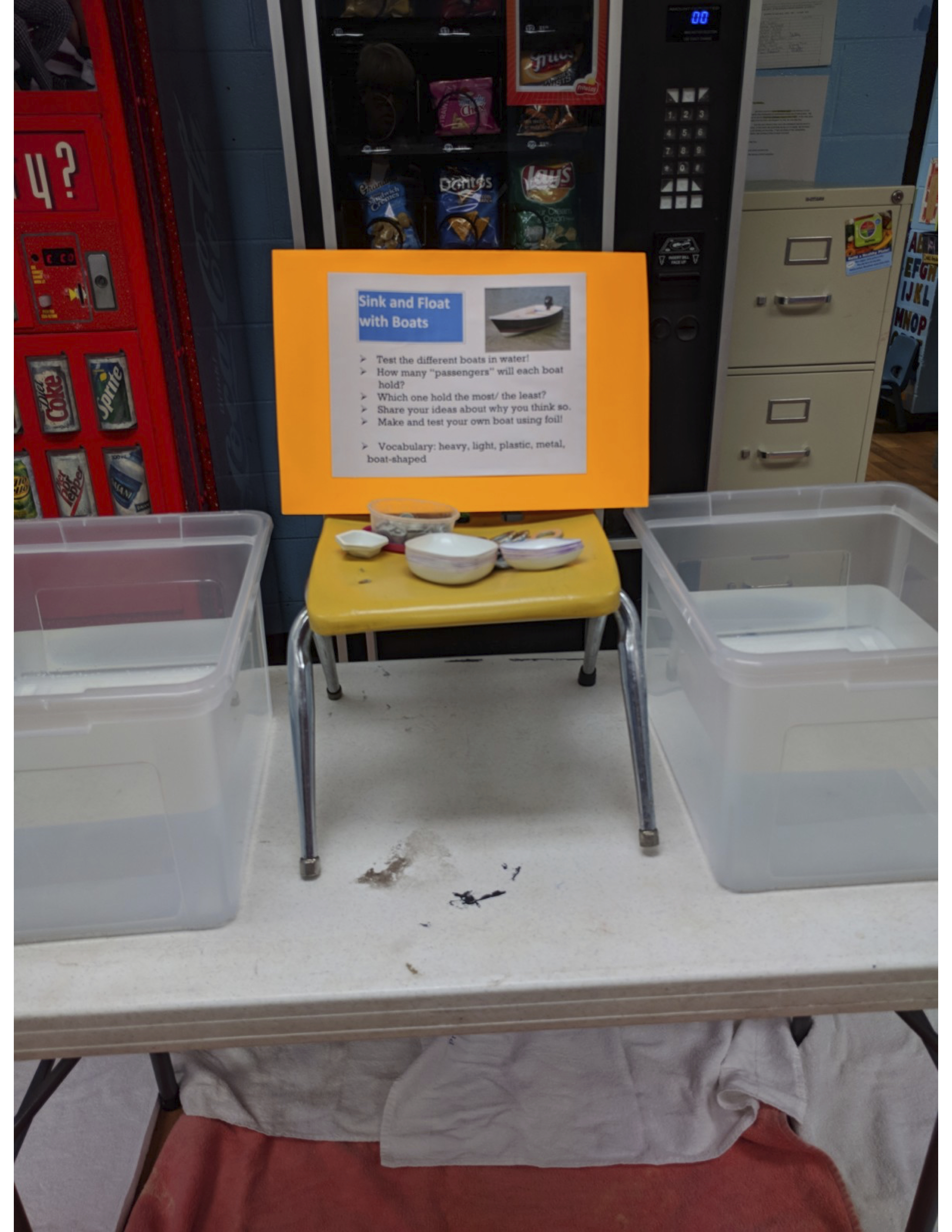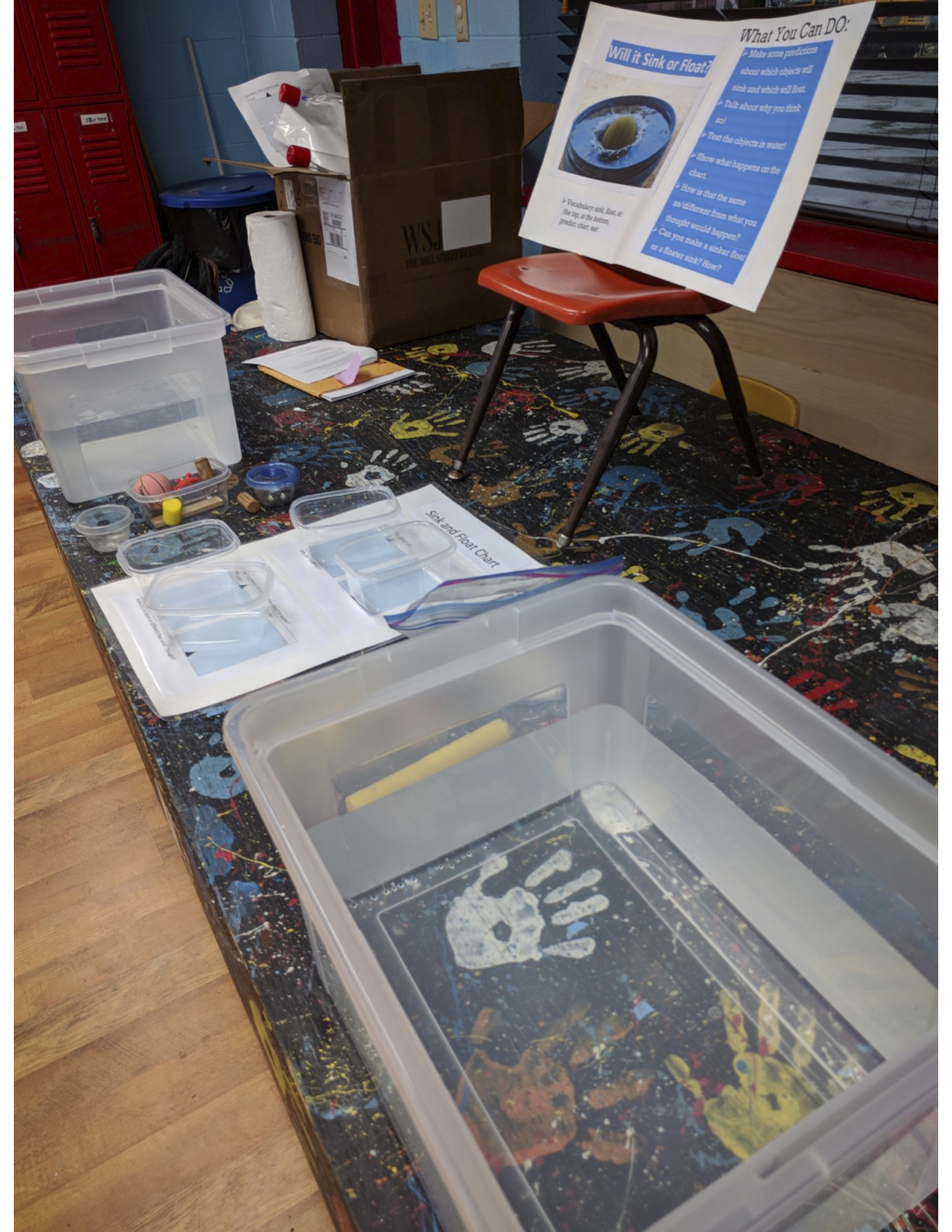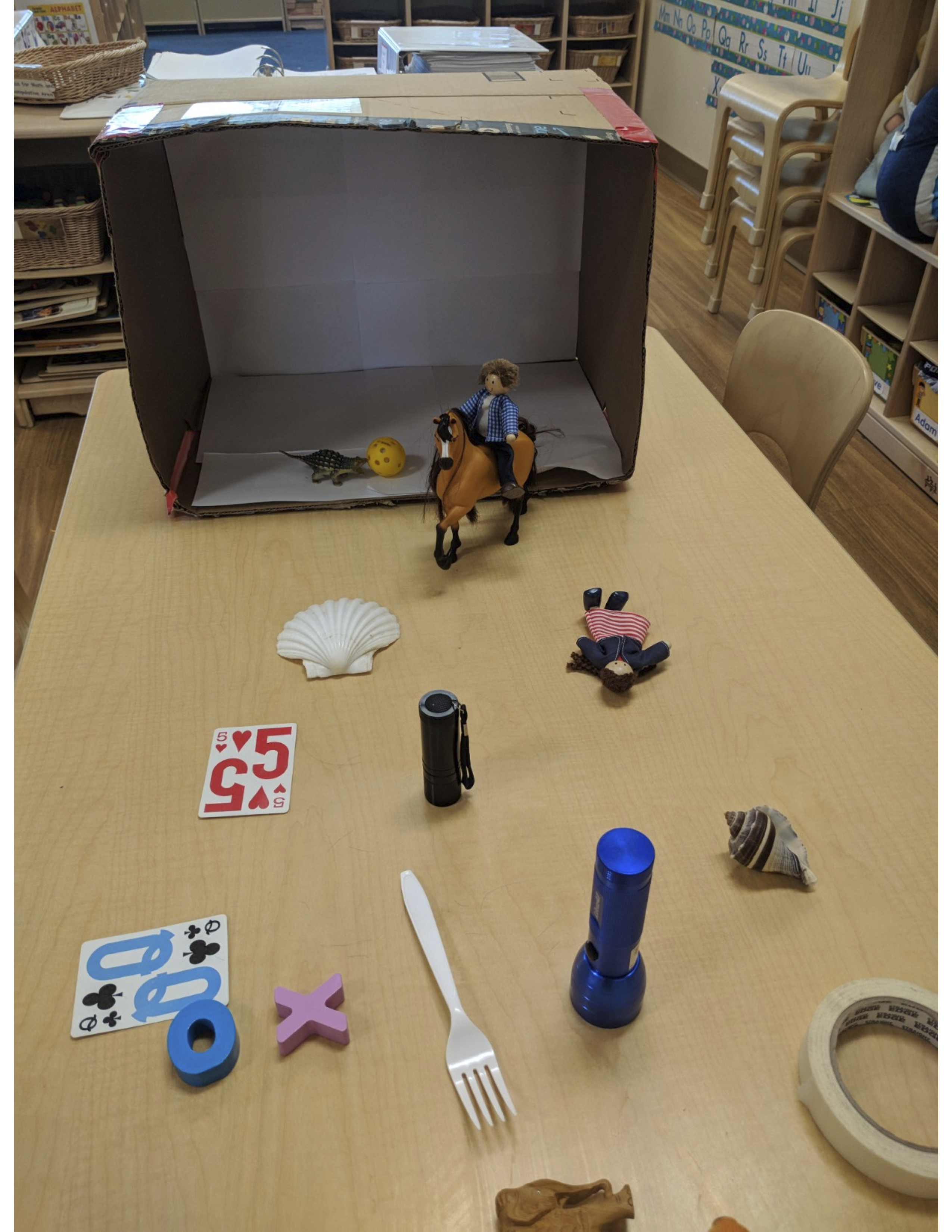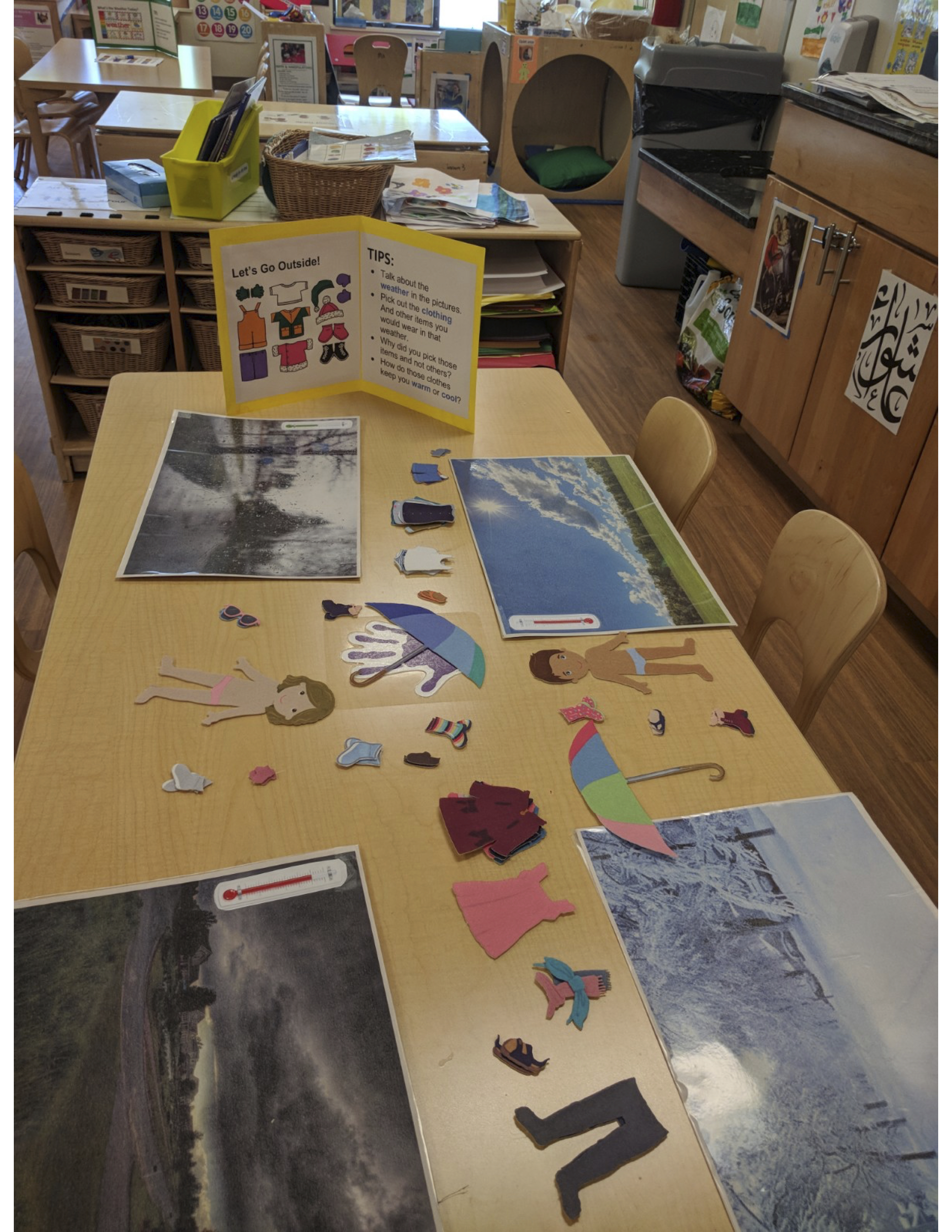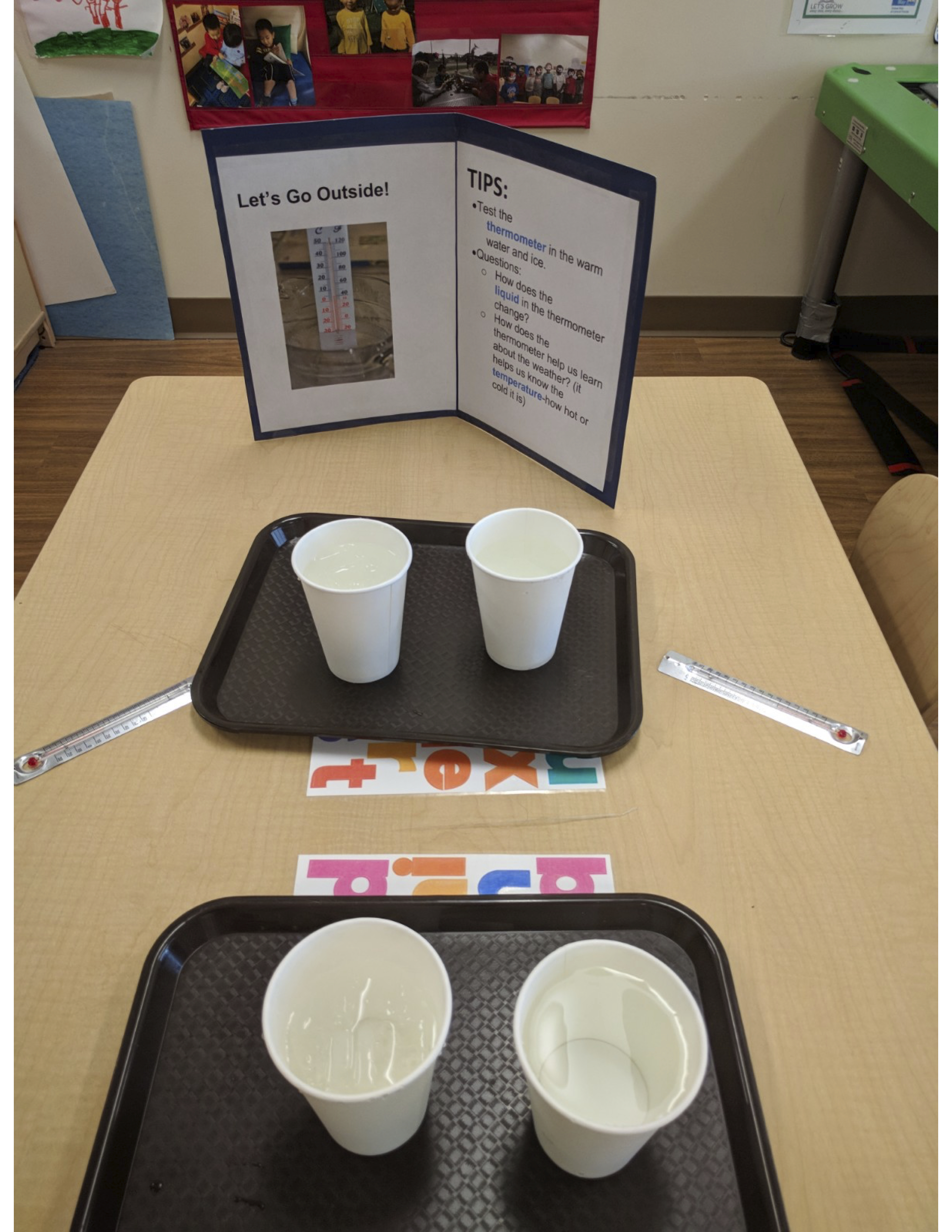Plan an Interactive Family Science Event with Support from an App
By Peggy Ashbrook
Posted on 2019-08-27
Welcome to guest post authors Cindy Hoisington, a science educator researcher at Education Development Center (EDC), and Claire Christensen, an educational media researcher at SRI International. This post is based on Cindy and Claire’s recent evaluation of the PBS KIDS Play & Learn Science app and activities.
Are you an early childhood educator with lots of experience doing science with children? Or are you just dipping your toes into science and STEM (science, technology, engineering, and math)? You are probably being asked to include more science in your curriculum and make connections to the other STEM disciplines. As you may know, families have a huge influence on their children’s attitudes toward doing and learning science. Family science interactions and conversations support children’s science and STEM interests and their views of themselves as capable learners. By getting families engaged, you can help them maximize their important role in promoting children’s science inquiry, interests, and self-confidence.
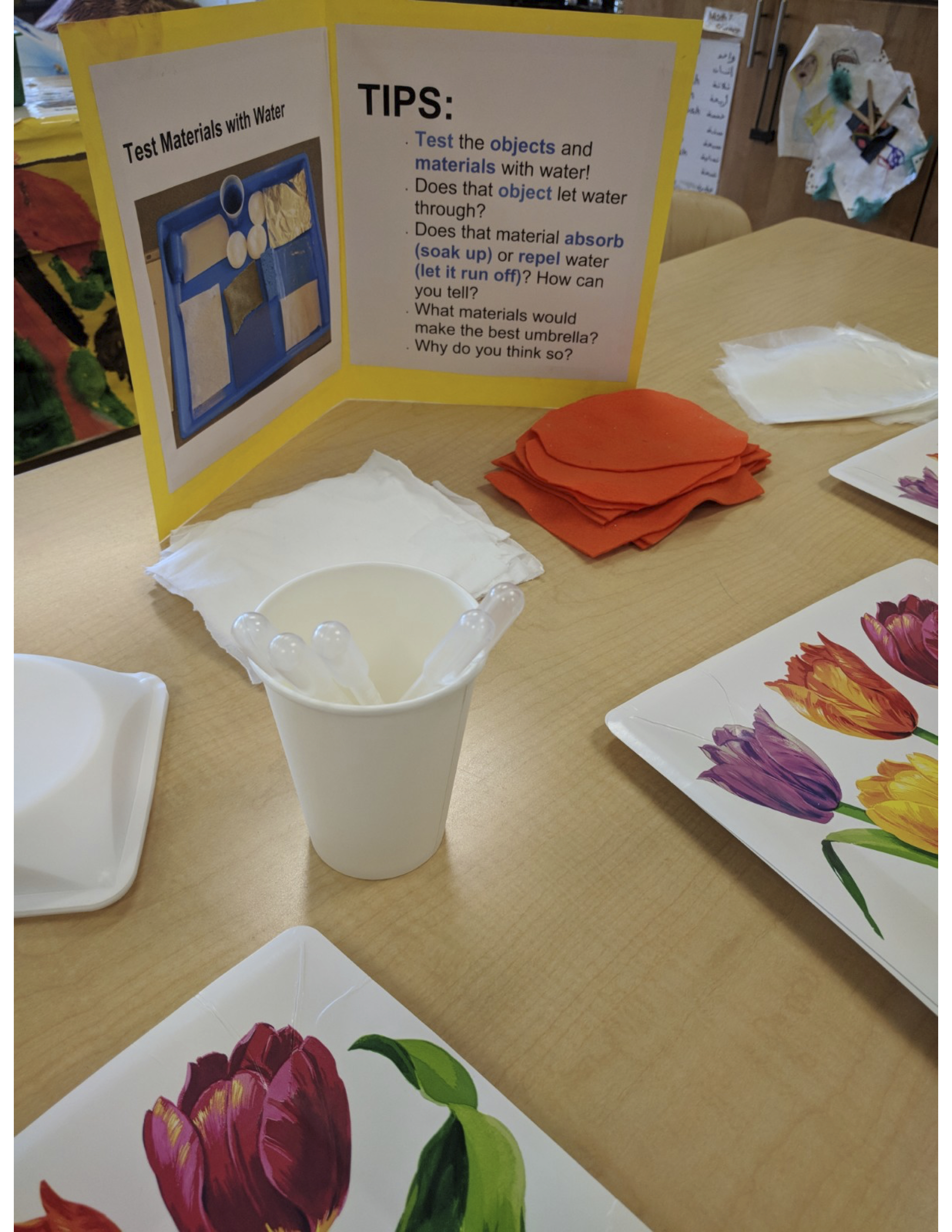
One way to do this is by hosting a family science event at your school or program. But where do you start? We found that the PBS KIDS Play & Learn Science app can be a useful tool for planning and hosting engaging and interactive family science events at early childhood programs.
The PBS KIDS Play and Learn Science app
The PBS KIDS Play & Learn Science app was developed as part of the Corporation for Public Broadcasting (CPB) and Public Broadcasting Service (PBS) Ready To Learn Initiative, funded by the U.S. Department of Education. It includes child and parent-facing resources on five topics: Ramp and Roll; Water Games; Shadow Play, Weather Control, and Gear Up (weather-appropriate clothing). The app is free to download on any smartphone or tablet. We did a study of the app and found that– along with supports including family science events—it positively influenced children’s science learning and vocabulary and parents’ engagement in science activities with their children.
Hosting a family science event
In order to conduct the study, we collaborated with two early childhood programs: a private childcare center in the South and a Head Start program in the northeast. As part of the study we used the Play & Learn Science app to plan and facilitate two 90-minute family science events, focused on Ramp and Roll and Water Games (Event 1) and Shadow Play and Weather Control/Gear Up (Event 2). We combined Weather Control and Gear Up since both topics relate to learning about weather. Program staff recruited interested families, provided feedback on our study plans, and helped us facilitate the family science events. In the process of implementing the study, we identified seven key strategies for hosting engaging and educative science events that get parents and children exploring, interacting, and talking together. We use the term “parent” to apply to any adult who provides primary care for a child.
Plan what, where, when, and who for the event
We found that careful planning was essential. At each family event we introduced two science topics and planned hands-on activities for each topic based on games and activities in the app. Activities were separated into separate stations (2 per topic). Event 1 focused on Ramp and Roll and Water Games and included the following hands-on activities:
- Explore the Roll: Families placed a variety of objects on ramps and recorded which objects slid and/or rolled depending on their shapes and how they were placed on the ramp.
- Hit the target!: Families placed a paper target on the floor and worked together to create an incline that would land a ball on the target.
- Build and play with ramps: Families built ramp systems using foam blocks, cardboard, baking pans, and cove molding.
- Will it sink or float?: Families made and recorded predictions, tested objects in water, recorded results, and talked about how their results compared to their predictions.
- Sink and float with boats: Families tested a variety of small plastic boats in water to find out how much weight they can hold and still float.
- Make and test your own boat: Families made boats from aluminum foil, tested them using metal washers as “passengers”, and recorded how many passengers their boats would hold before sinking.
- Read books about ramps and sinking and floating: Families read and talked about Roll, Slope, and Slide by Michael Dahl and Who Sank the Boat? by Pamela Allen.
At Event 1 we learned that families moved through the activities more quickly than we had anticipated so we incorporated more activities into Event 2 than we had originally planned.
Event 2 focused on Shadow Play, Weather Control, and Gear Up and included the following activities:
- Make shadow puppets: Families used cardstock, markers, craft sticks, hole punchers, and tape to make “puppets” and used them to create shadows on the wall with flashlights.
- Create shadow structures: Families built structures with foam blocks inside a large cardboard box layered with white paper and used flashlights to make and explore their structures’ shadows.
- Make flashlight shadows: Families investigated a variety of objects with flashlights and drew pictures of the shadows they created.
- Trace your shadow: Families used an LED work light to make and trace their own shadows on chart paper taped to the wall.
- Investigate thermometers: Families tested thermometers in cups of ice and warm water to observe how the liquid in the thermometers changed to indicate temperature.
- Dress for the weather: Families choose from 4 different weather scenarios and dress felt dolls for the weather choosing from a wide variety of weather-appropriate clothing.
- What’s the weather today?: Based on their own observations of the weather outdoors, families filled out a weather chart and talked about aspects of weather including sun, clouds, wind, precipitation, and temperature.
- Play with umbrellas: Families explored and role-played with different types of umbrellas and talked about how their sizes, shapes, and materials umbrellas make them useful for staying dry in the rain.
- Test materials with water: Families tested pieces of felt, cotton, plastic, and paper towel by dropping water on them with plastic pipettes and recording which material would be best for staying dry in the rain.
- Read books about shadows and weather: Families read and talked about Shadows and Reflections by Tana Hoban (wordless picture book) and Weather words and what they mean by Gail Gibbons.
We applied what we learned from Event 1 to our planning of Event 2. For example, at Event 1 families moved through the activities more quickly than we had anticipated so we added more activities to Event 2 than we had originally planned. We also learned that it was important to have plenty of space between stations and activities in order to avoid traffic jams. At Event 2 we assigned one facilitator the task of guiding families to less crowded activities. We planned both events to begin at one hour after pick-up time to accommodate family schedules and found that we needed that time to set-up the activities before families arrived. We created “passports”—large index cards with labels and picture cues of each station to help families navigate independently. Once a family completed a station they received a sticker to put on their passport. We collaborated with program staff to make sure there was a facilitator available at each station to encourage family participation, support parent/child interactions, and keep the activities organized.
Create a welcoming atmosphere
Entire families were invited to each event, including the preschoolers’ siblings. Having a staff member available to provide childcare enabled parents to focus more attention on their preschooler. Both events began with pizza and salad so parents wouldn’t have to worry about rushing home to make dinner. Finding enough space to accommodate 15-20 families for a meal was a challenge and we tried a conference room, a large classroom, and a gross-motor space. At the first event we gave a short talk about families’ important roles in sparking children’s interest and excitement in science, quickly realizing that we needed to keep our remarks brief since children were eager to get to the activities. We identified the exploration activities and where they were located, distributed the passports, and sent families off to explore.
Keep the focus on parent/child interaction and talk. Our primary goals were to show parents that science inquiry and learning can be active, engaging, and playful and to encourage them to explore, interact, and talk with their children during the activities.
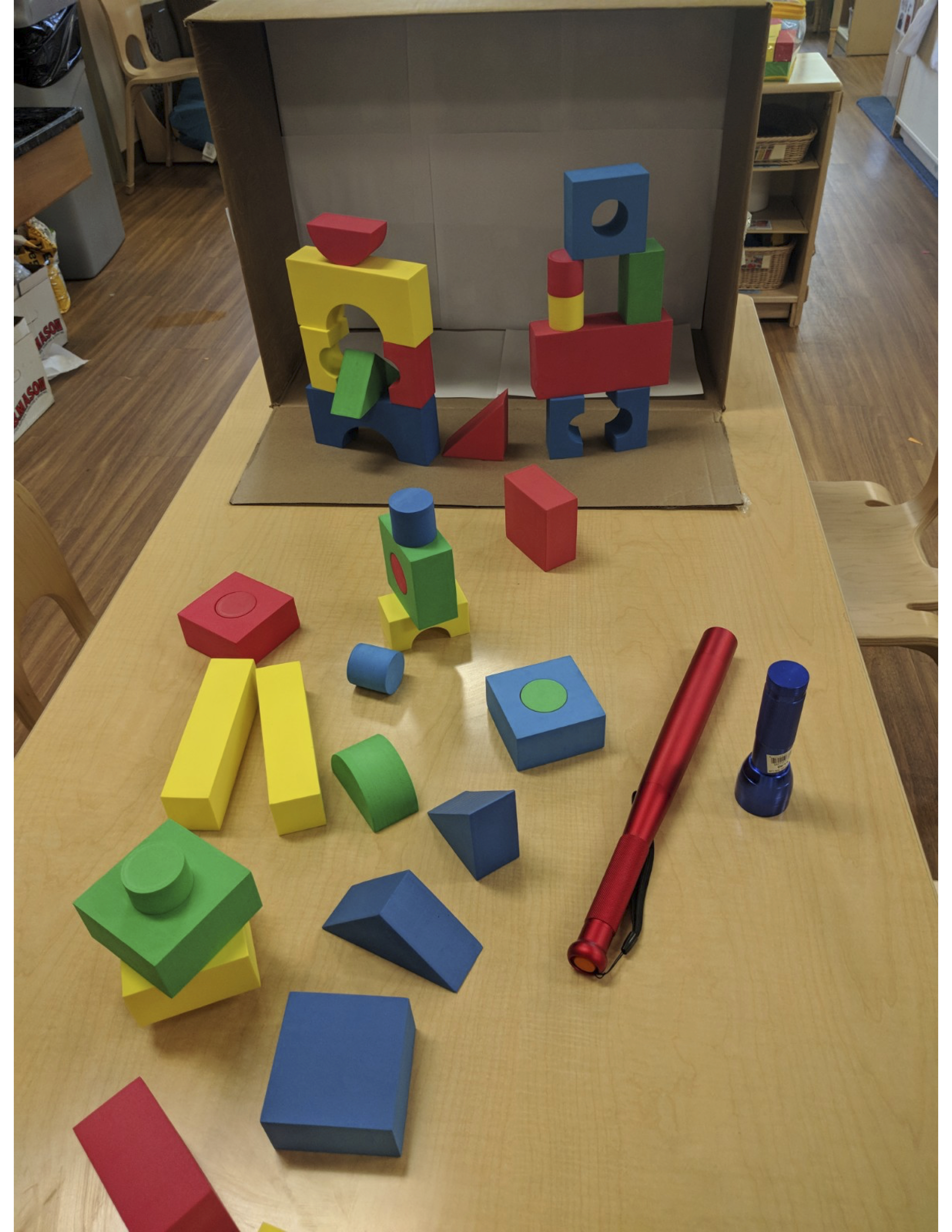
We intentionally chose activities that were easily accessible to all parents—no specialized science knowledge required! We found that activities in which children needed adult support—for recording predictions and results of an investigation for example– were most successful in promoting parent/child interaction. We also found that how we arranged the chairs at each activity was critical in supporting parent/child interaction. Parents were much less likely to sit with their child at an activity if they thought a child was waiting for a seat. One challenge was finding seats for adults who were not comfortable sitting in preschool-sized chairs.
Directly facilitate parent/child inquiry and interaction.
Directly before each of the events, we met with program staff who would be facilitating the activities, reviewed our plans, and suggested a variety of specific strategies they might use to promote parent/child interaction. These included 1) encouraging parents to observe their children’s play and point out science connections—for example drawing attention to the perseverance and problem-solving involved in creating a ramp system; 2) modeling talk tips parents might use such as Do you think the car will still roll if you turn it upside down?; and 3) suggesting challenges parents and children could address together such as How can you create one shadow with both of your bodies? We found that some parents wanted to explain science concepts to children by telling them for example “all heavy things sink”. In this case facilitators were encouraged not to correct parents, but to gently challenge their ideas by asking for example What about this big heavy wooden block? Do you think it will sink or float?
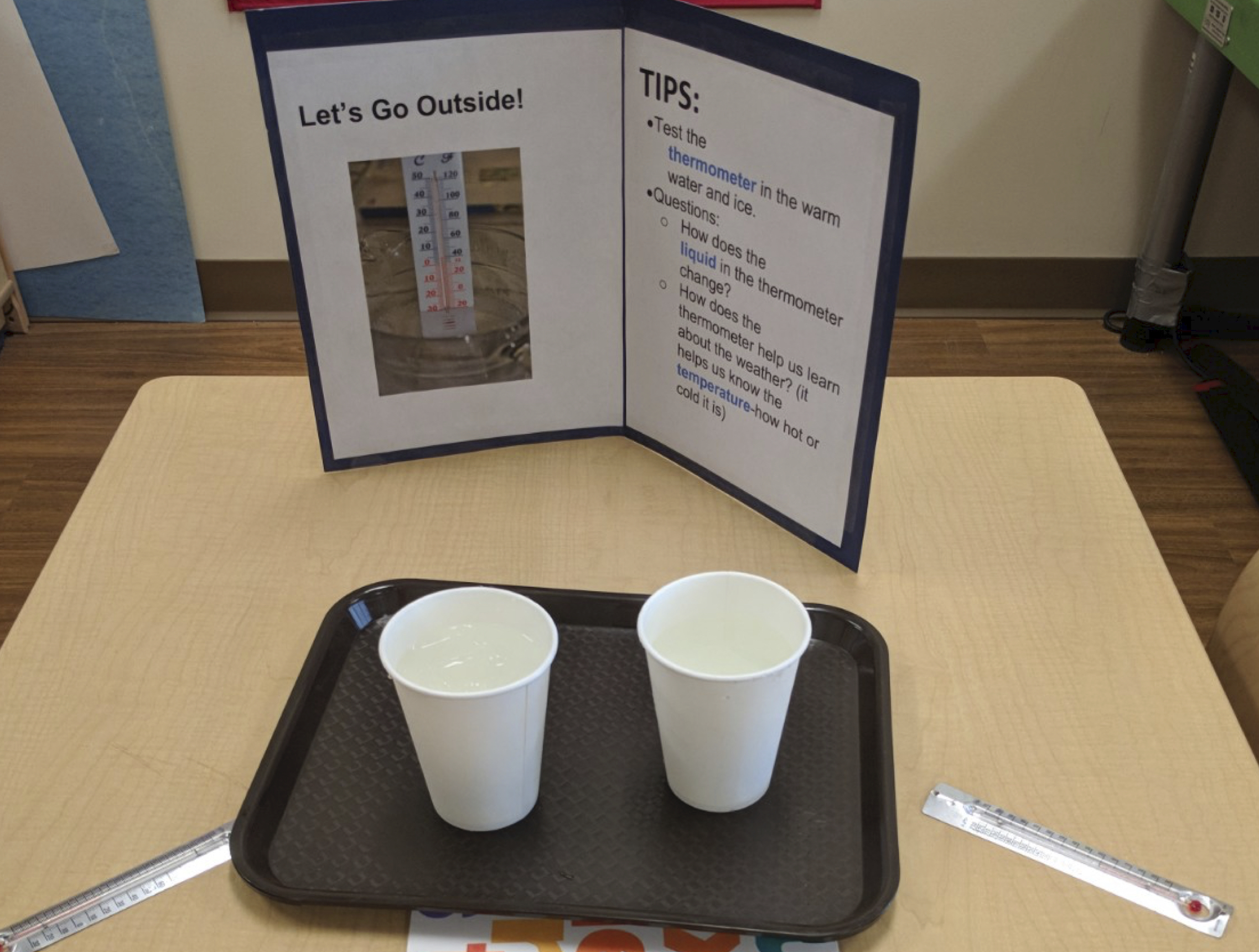
Create signage to support inquiry and interaction. We created clear signage for each activity that included questions parents might ask to spark inquiry.
Our signage was in English only, but we highly recommend providing signage in all languages spoken by the families. Signage at the roll and slide activity included What is similar about all the objects that rolled? and How can you turn that object to make it slide? and signage at the shadow tracing activity included What happens to your shadow when you move closer to/farther from the light? and How can you change the shape of your shadow? We found that parents used these questions more often when we drew their attention to the signage and provided explicit modeling.
Provide resources for at-home science activities. All of the activities at the events featured familiar household materials and required minimal set-up. We provided paper-based directions for each activity—including talk tips and extension ideas—to support families’ home explorations. We were also able to give families some take-home materials such as small LED flashlights, sidewalk chalk for tracing shadows outdoors, child-safe thermometers, ping pong balls and paper targets, and plastic eyedroppers for water explorations. During dinner at the second event we engaged families in small group discussions about their home experiences. We were impressed to hear families talk about how they had extended children’s ramps and water explorations to the playground (rolling balls down slides) and to bath-time (exploring sinking and floating in the tub). Parents’ enthusiasm was contagious as they shared their children’s on-going interest in the topics they had explored at the first event and how much they and their children were anticipating the second one.
Consider incorporating digital technology. As well as the parent-facing resources we used to plan our family science events, the PBS KIDS Play and Learn Science app includes developmentally-appropriate digital science games for preschoolers. We incorporated parent/child tablet use at each station along with the direct, hands-on explorations, pointing families to the game(s) in the app most relevant to the science content they were exploring at that station. We found that integrating tablet use within stations—rather than introducing them separately— helped parents and children make explicit connections between their digital and real-world investigations. We also used the tablet activities to familiarize parents with the parent-facing resources in the app—including the hands-on activities, extensions, and talk tips.
Keep in mind that an app with parent science supports can be a useful tool for planning and hosting family science events and supporting children’s inquiry whether or not you decide to incorporate digital games.
In conclusion
Parents can be powerful mediators of their children’s science experiences, but science can be a challenging domain for parents to support, especially when they lack access to information and resources about children’s development and learning in science. By engaging families at your school or program, you can be instrumental in helping them maximize their critical role in supporting their children’s science inquiry, interests, and confidence. We were fascinated to observe how early children’s specific science interests begin to emerge as we observed individual children return again and again to their favorite ramps, water, shadows, or weather activities. You can be even more effective in supporting families when you align children’s home and school science explorations. Teachers and administrators at the programs that participated in our study were so amazed at the enthusiasm families expressed about the science events, that they decided to continue the topical explorations in classrooms.
Below are some suggestions for other free educational apps that include child, parent, and teacher-facing resources as well as some teacher-friendly research articles about supporting children’s and families’ inquiry-based science experiences.
Digital apps for parents and teachers:
Resources for teachers:
STEM Starts Early; Grounding science, technology, engineering, and math education in early childhood
Supporting Parents to Support Science
References
Allen, P. (1996). Who sank the boat? Putnam Books. New York, N.Y. ISBN13: 978-0-698-11373-2
Dahl, M. (2006). Roll, slope, and slide; A book about ramps. Picture Window Books. Mankato, MI. ISBN 978-0-688-07089-2
Gibbons, G. (1990) Weather words and what they mean. Holiday House. New York, N.Y. ISBN13: 978-0-823-40805-4
Hoban, T. (1990). Shadows and reflections. Greenwillow Books. New York, N.Y. ISBN 978-0-688-07089-2
Disclaimer: The views expressed in this blog post are those of the author(s) and do not necessarily reflect the official position of the National Science Teaching Association (NSTA).



